The 2012 Nissan Versa Sedan
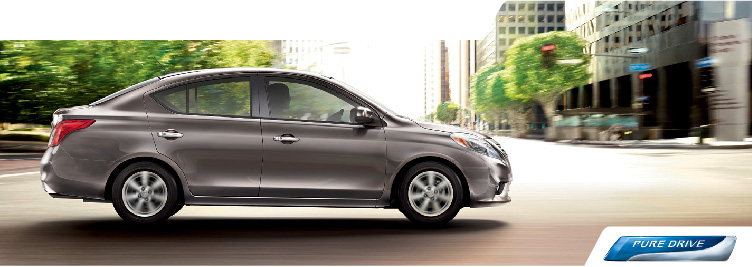
The 2012 Nissan Versa Sedan is powered by a new 109-hp DOHC 1.6-liter 4-cylinder engine capable of delivering 107 pound-feet of torque. The all-new 2012 Versa is the first Nissan model to wear the PUREDRIVE™ badge. PUREDRIVE™ badges indicate utilization of Nissan’s advanced low-emission technologies that promote eco-friendly driving by focusing on improving fuel efficiency, and reducing C02 emission levels (one of the main causes of greenhouse gases). Applying this to the new Versa meant reducing the size of engine and transmission, reducing the number of component parts by 20 percent, and reducing platform weight. It weighs around 150 pounds less than the previous “B” platform. The new Versa is equipped with cutting-edge technologies, like the dual injector system designed to improve combustion efficiency by finely spraying fuel to get more out of every last drop. It’s also been equipped with Continuously Variable Valve Timing Control System (CVTCS) on both intake and exhaust camshafts which enhances valve control, thus creating quicker response.
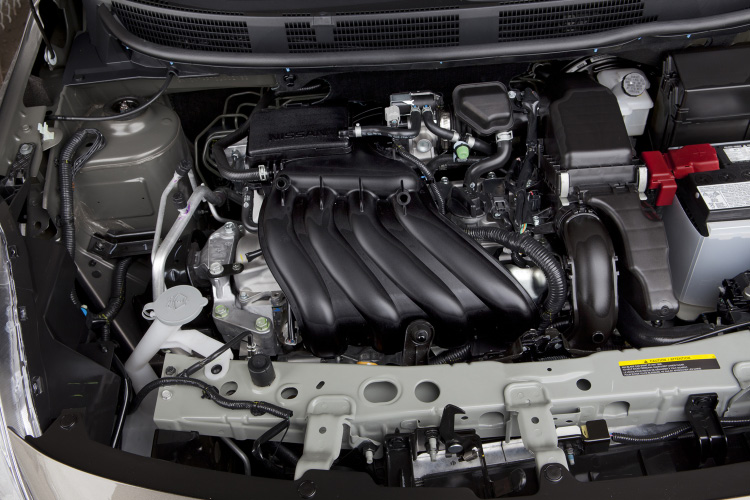
The 2012 Versa compact sedan is built on an all-new front-wheel drive “V” platform. Its exterior shape takes some design cues from the Altima and Maxima. The newly designed Versa body style has a new front grille with oval-shaped multi-reflector halogen headlights and is configured with reshaped taillights that sweep from the rear fender to the rear of the Versa. While the last version Versa had a more conventional flat roof and steep rear window, you’ll notice the new car’s roofline gently slopes toward the trunk, following a more coupe-like design trend. You’ll also notice that the hood and sides have been broken up with creased character lines. These exterior changes along with the shape of the trunk lid were designed to help give the new Versa Sedan excellent aerodynamics which help enable it to achieve a low 0.31 drag coefficient. Other exterior features include a fixed roof antenna, body-color front and rear fascias and an available black with chrome-trimmed grille, blacked-out B-pillar, chrome door handles and front fog lights, and remote control side mirrors.
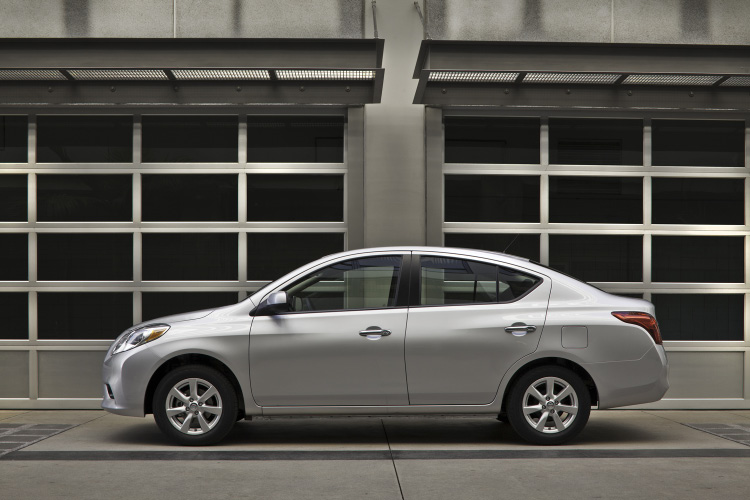
The new Versa Sedan’s interior passenger and cargo spaces have been designed with more rear legroom with interior seating for 5 passengers, and a trunk design that was configured to provide more usable space than its predecessor. The interior volume is 90.0 cubic feet and trunk volume is 14.8 cubic feet (104.8 cubic feet total). A 60/40-split fold-down rear seat is offered on SL models. Other available interior features include Fine Vision instrument panel meters, trip computer, power windows with driver’s one-touch down, auto door locks, remote trunk release lever, and steering wheel-mounted audio controls.
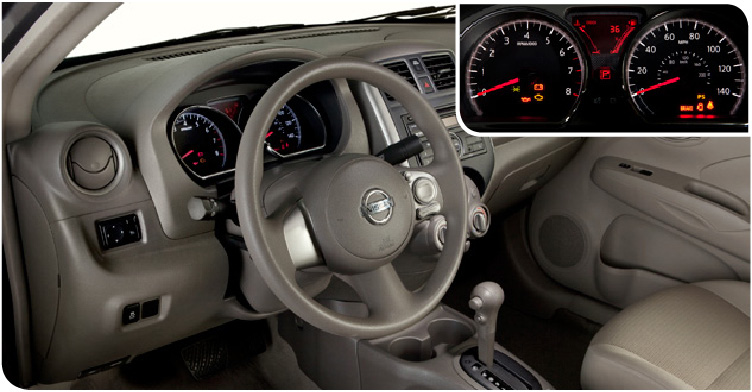
Next Generation Drivetrain
The 2nd generation 1.6-liter HR16DE engine is equipped with a new Nissan
dual-injector system that places two streamlined injectors mounted 60 mm from the inlet valve for each cylinder to help promote stable combustion. The dual-injector system allows a wider injection spray angle of closely targeted sprays of fuel. They are designed with smaller nozzle holes that require a fuel pressure of only 51 PSI while achieving a 57 percent finer particle size than the previous generation injectors. The new Dual Injector system leaves fewer deposits on the intake manifold which helps to reduce the unburned residual fuel after combustion. This allows the use of a new catalyzer design that requires about half the amount of rare metals to further reduce the unburned fuel (hydrocarbon emissions).
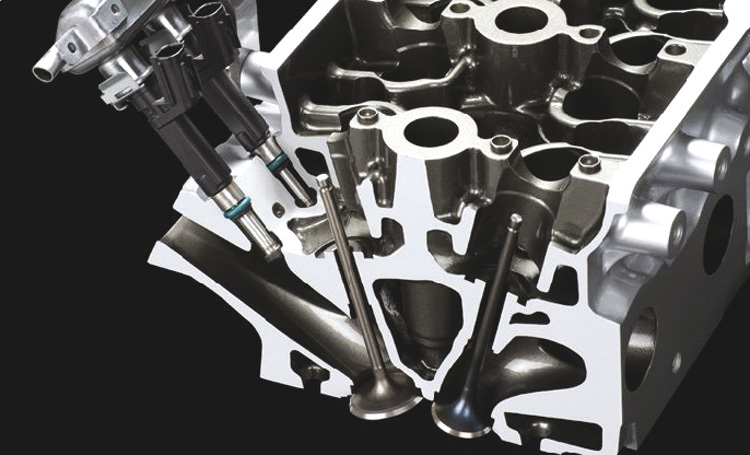
The new engine which is more compact and lighter weight than the previous HR16DE adds a twin Continuous Variable Valve Timing Control system mounted on both the intake and exhaust ports (similar to the system on the Maxima). CVTCS measures intake flow and engine rpm, then continuously adjusts the moment each valve breathes in. It achieves this with high flexibility in valve timing operation resulting in combustion efficiency throughout the powerband. A fuel efficiency improvement is provided by optimizing both intake and exhaust side timing according to rpm. By using CVTCS on the outlet port, the new engine adjusts exhaust valve timing to increase torque while improving thermal efficiency and lowering inhalation resistance. The addition of a piston oiling jet, tuned piston upper top shape, and an expansion of the exhaust manifold diameter also helps combustion efficiency. Twin Continuously Variable Valve Timing Control System results in optimal engine performance and economy, whether you’re looking for torque off the line or some high-end passing power.
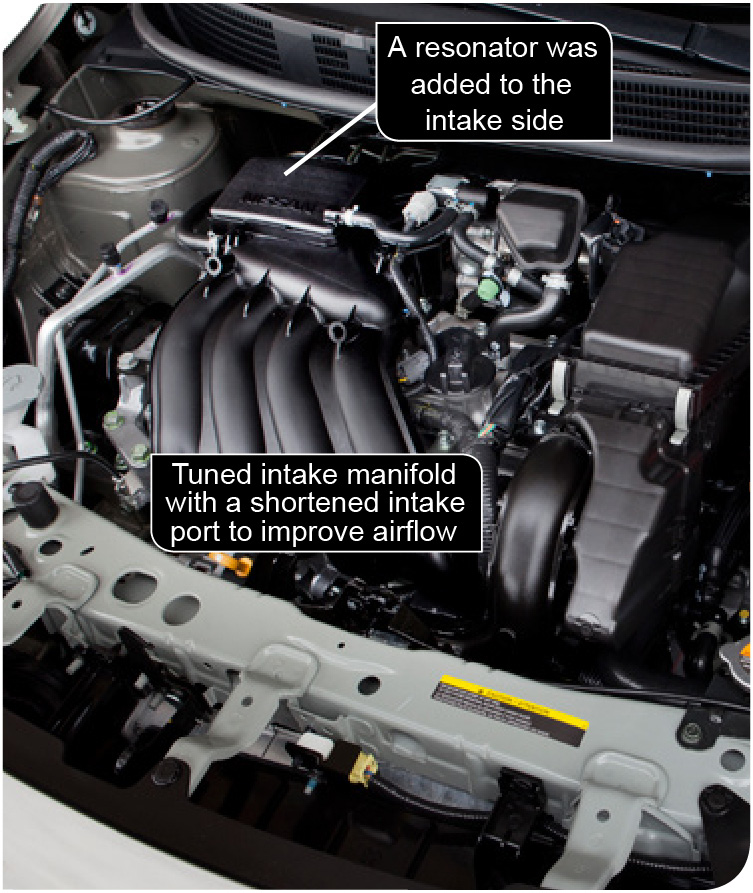
Xtronic CVT™ (Continuously Variable Transmission)
The 2012 Versa is equipped with a 5-speed manual transmission and is also available with a new generation of the Xtronic Continuously Variable Transmission (CVT). The CVT unit is equipped with the highly sophisticated electronic control technology called Adaptive Shift Control (ASC). The new CVT is smaller, lighter, and more efficient than its predecessor. It offers the widest range of drive ratios in CVT. It is composed of a pair of conical pulleys that adjust continuously to control the width of the gap between the pulley halves. The flexible steel belt has multilayered steel rings on both sides that also adjust. So, along with change of the pulley groove width, the belt contact radius is changed. The wrapping radius of steel belt and the continuous adjustment of the pulleys from low status to overdrive status allows continuous and stepless gear shifting. In the new CVT, the pulleys have also been repositioned higher in the case which keeps them from having contact with the transmission fluid since the transmission was downsized. Since the pulleys don’t agitate the oil, this results in a friction reduction.
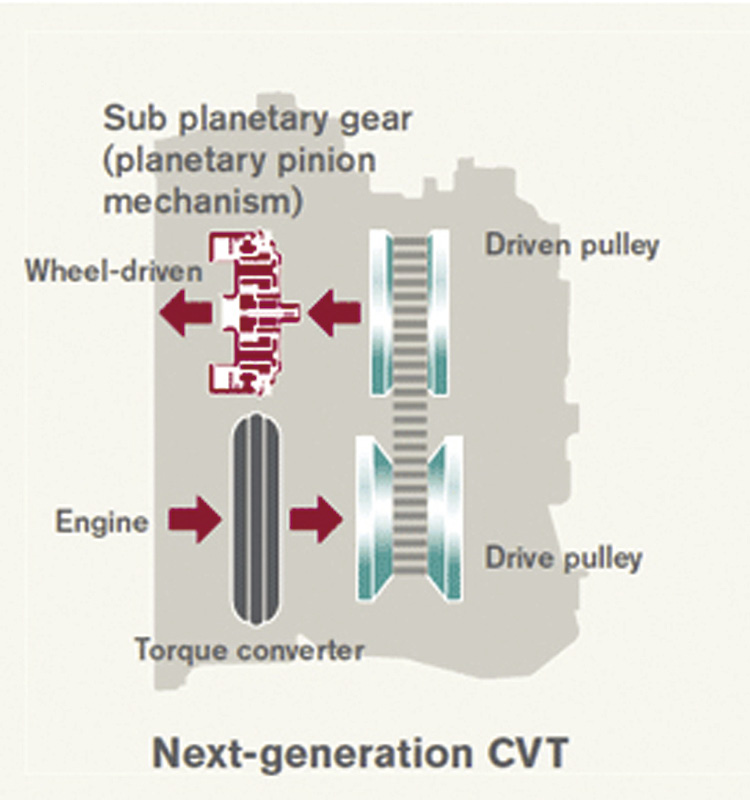
The new CVT is designed with an auxiliary gearbox and is the 1st use of a planetary gear set to expand the available forward gear ratios in a CVT. The new CVT design allows a broader range of transmission drive ratios, more than 20% higher than can be found in conventional CVTs or even typical 7-speed transmissions. The auxiliary gearbox is composed of a planetary gear, multi-disc clutch, and a multi-disc brake. The auxiliary gearbox raises the available transmission ratio from 6.0:1 to 7.3:1. The mechanism performs stepped down transmission shifting (1-2 gear shifting and reverse gears are changed with the planetary gear mechanism). The TCM monitors the driving conditions, such as the vehicle speed and the throttle position and selects the optimum gear ratio, and determines the gear change steps to the gear ratio. Then it sends a command to the step motor that controls the pulley ratio, and the shift control valve to control the flow-in/flow-out of line pressure from the primary pulley. This determines the position of the moving-pulley and controls the gear ratio.
_opt.jpeg)
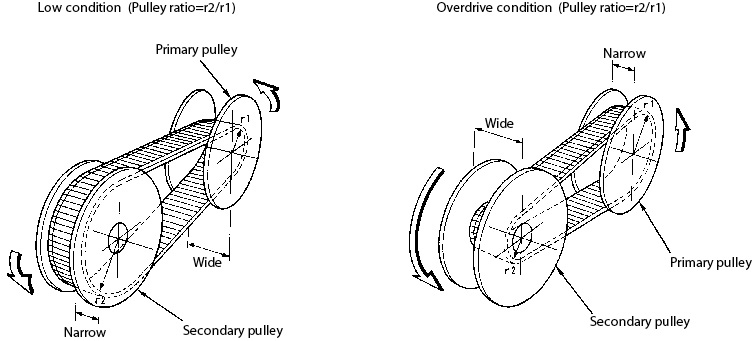
With stepless shifting of gear ratios, the CVT can avoid the shift shock and provide the CVT’s continuous change of gear ratio transmission. The automatic CVT optimizes engine rotation at all speeds. This helps the new Versa to achieve an impressive 38 highway mpg.
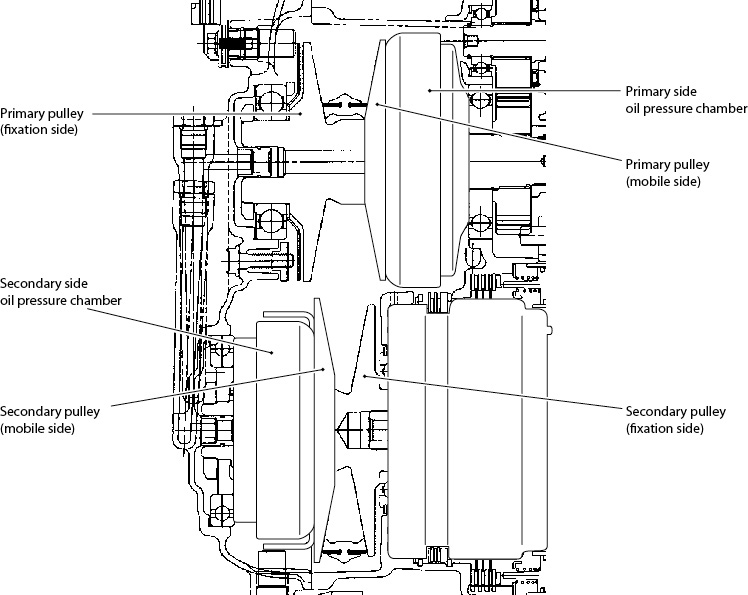
CVT Fluid Cooler and Fluid Warmer System
The Versa CVT is equipped with a CVT cooler and fluid warmer installed on the front part of transaxle assembly. When the engine is started while engine and CVT are cold, engine coolant temperature rises more quickly than CVT fluid temperature.
The CVT fluid temperature sensor detects CVT fluid temperature via the use of a thermistor. The thermistor changes resistance in relation to CVT fluid temperature, thus changing the signal voltage back to the TCM. The TCM evaluates the CVT fluid temperature from the signal voltage value.
_opt.jpeg)
The CVT Fluid Cooler and Fluid Warmer system is provided with two circuits for CVT fluid warming and engine coolant respectively. The oil warmer circuit uses a heater thermostat which starts opening under low temperature conditions before the completion of an engine warm-up, so that warmed engine coolant warms the CVT quickly. It fully opens at the completion of the engine warm-up. Shortening the CVT warming time (by warming up the CVT fluid temperature when it is lower than coolant temperature) helps generate less friction which helps improve fuel economy during startup.
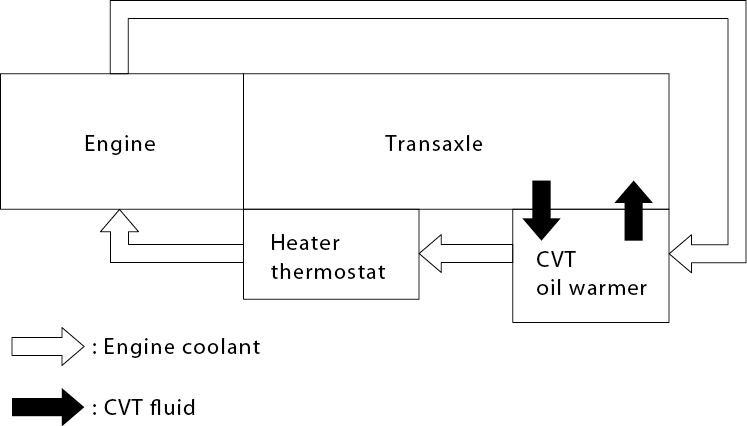
After the engine and CVT reach normal operating temperature, the coolant circuit provides a cooling effect to prevent excessive CVT heat build-up.
Note: Engine coolant is normally cooler than CVT fluid at normal operating temperatures.
Steering, Suspension and Brakes
All 2012 Versa Sedans are equipped with an independent MacPherson front strut suspension with stabilizer bar. Torsion beam rear axle suspension with integrated stabilizer bar helps keep you flat through the corners. Other standard equipment includes Electric Power-assisted Steering (EPS), to reduce steering effort. EPS helps enhance overall fuel economy because it doesn’t use engine power like a belt driven hydraulic steering system and operates only when steering assist is needed.
The power assist increases at lower speeds. It decreases as vehicle speed increases for better handling at higher speeds.
Speed-Sensitive Power-assisted brakes helps reduce driver effort during stopping. The front disc brakes are vented to enhance cooling which helps reduce brake fade under high-speed application or continuous brake application. A 4-wheel Anti-lock Braking System (ABS) with Electronic Brake force Distribution (EBD) and Brake Assist (BA) is also standard on all Versa Sedan models.
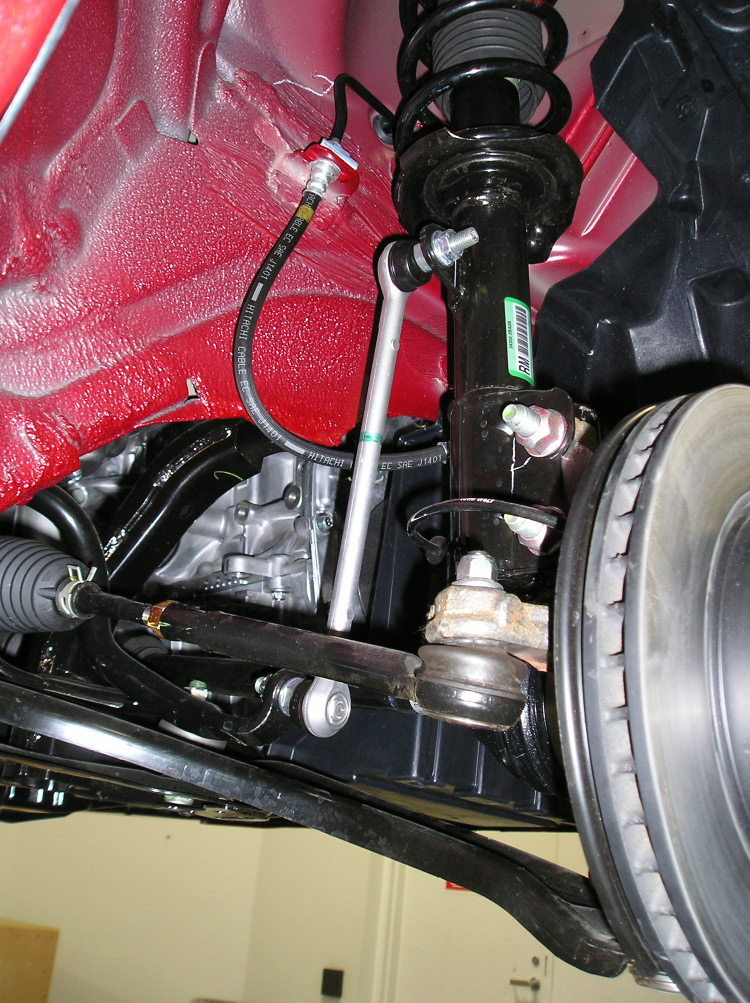
Entertainment and Connectivity
Available interior features are Key-linked illuminated entry system; driver’s seat lifter; Fine Vision instrumentation; upgraded trip computer; front and rear power windows with driver’s one-touch down; auto door locks; cruise control, and Integrated key and keyfob.
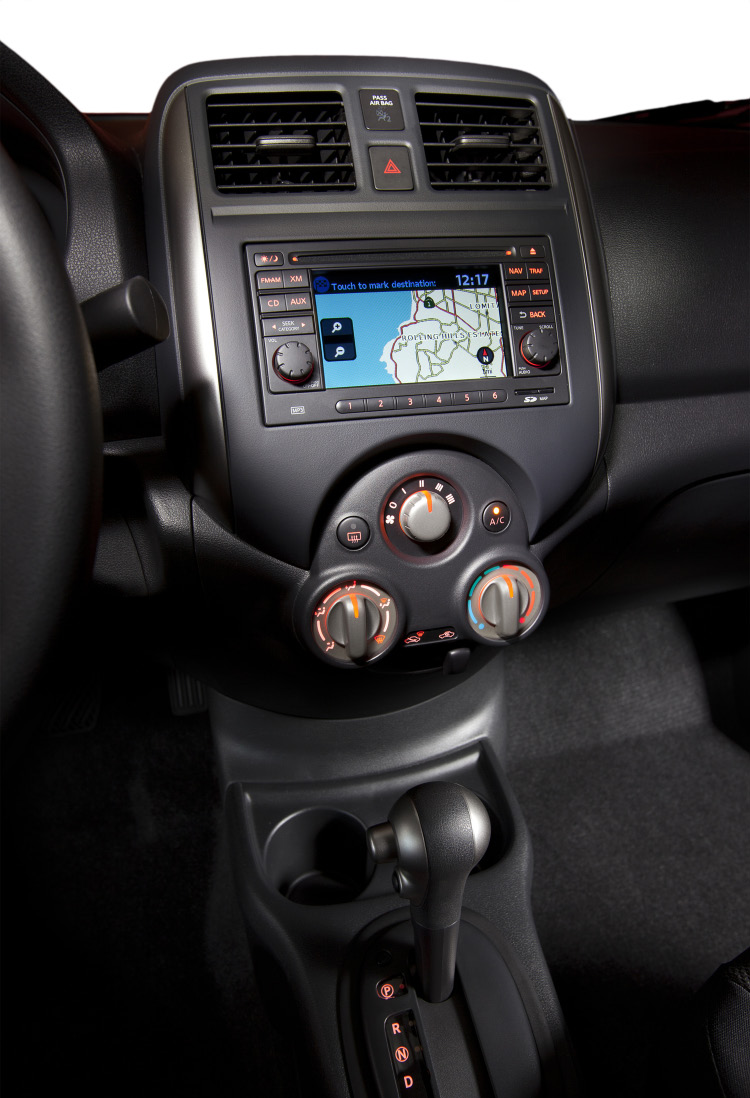
Upgraded AM/FM/CD audio with either a 90-watt or 180-watt system on the SL; and 4 speakers or 6 speakers on the SL, and steering wheel-mounted audio controls. Nissan Navigation System with XM NavTraffic® and with 5-inch color touch-screen display. Bluetooth® hands-free phone system; XM® Satellite Radio; integrated USB Interface System for USB/iPod® and other music storage devices and allows playback of MP3, WMA, and AAC music formats.
Safety and Security
The Versa is equipped with Nissan’s Advanced Air Bag System (AABS) with dual stage supplemental front air bags, that help reduce the driver’s and front-passenger’s risk of serious injury during certain frontal collisions.
Driver and front-passenger seat-mounted side-impact supplemental air bags and
roof-mounted curtain side-impact supplemental air bags deploy when the air bag sensors detect that a significant side impact is occurring. It’s also equipped with: LATCH system and child safety rear door locks, Tire Pressure Monitoring System (TPMS) for monitoring tire pressure. It’s comes standard with Vehicle Dynamic Control (VDC) that uses various sensors to monitor driver inputs and vehicle motion under certain driving conditions. The VDC function helps the Versa to automatically adjust power and apply the brakes individually as necessary to help the driver maintain control. The Versa also includes a Traction Control System (TCS), to help enhance drive-wheel traction when accelerating. The TCS senses wheel spin at all speeds and automatically reduces power to help limit wheel slip.
Occupant Classification System (OCS)
The Occupant Classification System (OCS) identifies different size occupants, and determines whether there is an occupant or a child safety seat present in the front passenger seat, or whether the seat is empty. The OCS control unit receives inputs from the occupant classification sensors. Depending on classification of the passenger, the OCS sends a signal to the air bag diagnosis sensor unit. The air bag diagnosis sensor unit uses this signal and the RH seat belt buckle switch signal to determine deployment or non deployment of the passenger front air bag in the event of a collision. Depending on the signals received, the air bag diagnosis sensor unit can suppress the passenger front air bag. The OCS (weight sensors) must be set to zero point using CONSULT after servicing the OCS system.
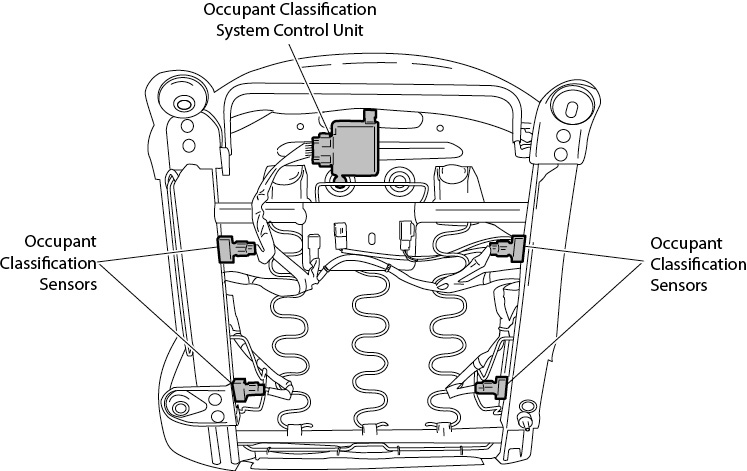
Note:
- CONSULT can be used to confirm when “zero point reset” for OCS is complete.
- Always perform zero point reset after the removal and installation of the seat or when disconnecting the OCS control unit harness connector even if zero point reset has been completed in the past.
- If zero point reset is incomplete, the passenger air bag will be disabled and the passenger air bag status light will be ON.
- In case of customer concern, CONSULT can be used to confirm the passenger air bag status.